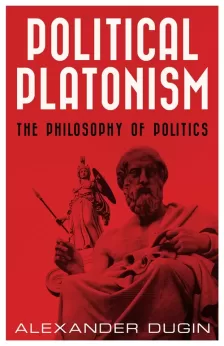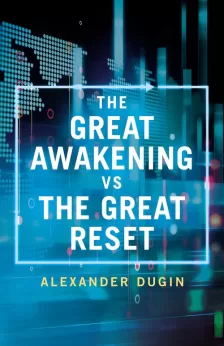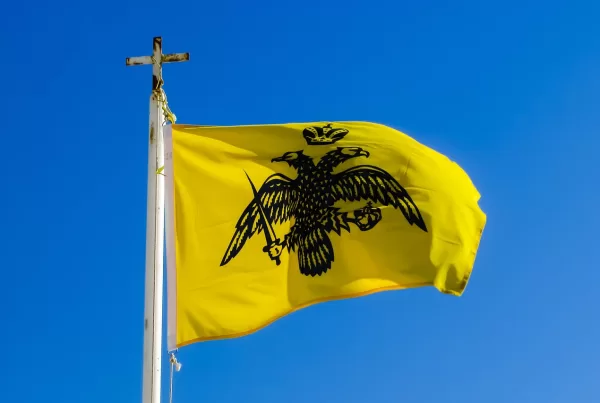Milanović-ism and the Tuđmano-Croatian Nationalist Insurgency
To understand Croatia and its politics deeper, we need to talk about the past two Croatian republics. In this article, I will not be talking about those parties whose symbols look like that of oil companies, devoid of all things Croatian and whose leaders are identical to their other European brothers — bland and insignificant and only contributing to the cultural euthanization of Croatia, which, as this article will show, will be hard to achieve.
The first Croatian republic was founded by Franjo Tuđman and is what I refer to as the Tuđmanist republic. Tuđman adhered to “neither East nor West,” opposing both Euro-Atlanticist Western hegemony and multipolarity. Croatia was only concerned with itself, the Croatian nation, only participating in international affairs when it concerned the Croatian nation in Bosnia and Herzegovina. Croatia under Tuđman was culturally independent from the world — only Croatian music, art, television, language, music and education.
Then the 21st century came, and with that the beginning of Stipe Mesić’s second republic, the undoing of all cultural independence Croatia had and the Croatian nation being dominated again, but this time under Western hegemony, where any expression of Croatian national and cultural independence is demonized, just as in the days of Yugoslavia. Upon the election of Mesić, Dražen Budiša told The Guardian that “[i]f President Tudjman marked the era of the creation of the Croatian state, then a new generation of politicians — and I’m one of them — has to mark the other era: to make Croatia a country of human rights, democratic freedoms, liberal democracy, attractive to the world and integrated into the Euro-Atlantic community.”
It was Mesić’s second republic that sold Croatian war heroes to The Hague. Even Tuđman’s own party, the Croatian Democratic Union, or HDZ, was de-Tuđmanized and thus turned into a pro-EU party. After the Iraqi army was disbanded by the Americans, it resulted in an insurgency. This is the current, second republic of Croatia: nationalists thrown out of their own party, thus becoming dissident elites; Croatian history and symbols being attacked by the international community and by their puppet politicians in Croatia. This is the environment in Croatia.
HDZ still remains split into two factions, one that is the de-Tuđmanised moderate European wing and the other remains the old Tuđmanist Croatian nationalist guard, who still fight for control of their original party. The moderate wing controls HDZ with its leader, Andrej Plenković, who reportedly seeks to gain a position in the EU.
One great example of the ongoing battle between the two factions of HDZ is Ljubo Ćesić, who is a Croatian war hero, general and politician. He stood in Knin after its liberation by the Croatian army alongside Ante Gotovina, Franjo Tuđman and his minister of defence, Gojko Šušak. I call him Franjo Tuđman’s strongest soldier. He said himself in June 2023 that he’d get batine, which means a beating, from Franjo Tuđman and Gojko Šušak because he’d have to fight better for the domovina, the homeland. It is for these reasons he is in these elections running against the HDZ — to conquer evil and restore the party of his father figures, Franjo Tuđman and Gojko Šušak, the party of Croatian nationalists taken hostage by Brussels and their puppets. Ćesić is backed by Milanović.
It is said that if HDZ does, in fact, lose these elections, Andrej Plenković will be replaced by Tomislav Karamarko, who is closest ideologically to the nationalist old guard of the HDZ. A defeat is almost inevitable as the greatest political threat to HDZ is the Domovinski Pokret, or Homeland Movement, its most recent political skup, or gathering, drawing the attention of Franjo Tuđman’s own son, Stjepan Tuđman, along with Croatian intellectuals Slobodan Prosperov Novak and Josip Jurčević, as well as a video endorsement from the leader of the Polish Law and Justice party, Jarosław Kaczyński.
This insurgency is not only happening within the Croatian elite and the walls of the Croatian parliament; rather it is going on openly in the public. We are taken to Zadar, where a mural of a Croatian WW2 soldier is located. It was vandalized by protuhrvati, anti-Croats who wanted that mural gone, but instead the opposite happened. In one instance, six copies of the mural were painted in one night in the city of Split. In every single city, there is a mural of that Croatian soldier, a symbol of resistance to anti-Croatian attacks that the second republic has brought onto Croatia.
What happens when you displace old party officials and the work they did to establish a country? What happens when you alienate an entire nation by attacking its history and identity? This is what we will see in Croatia.









